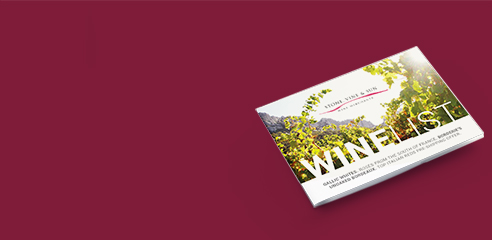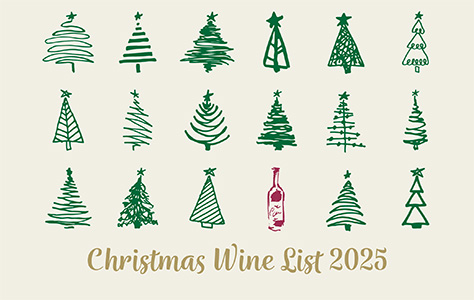2013 Red Burgundy
14th January 2015
SVS will not be making an extensive en primeur offer of Burgundy this year - and we have offered every year from 2002 to 2012, barring
2008 - as I just don't think we or our customers have an appetite for
it. Here's the background.
The Weather
There’s no beating about the bush. 2013 in Burgundy is 2008 all over again – a very difficult vintage in which to make great wine, simply because the weather was so awful. Let’s get the pain over with quickly: the spring was extremely wet, with almost twice the average rainfall. This wet and windy weather continued into late spring: flowering was affected and was very uneven – thus reducing the number and size of the bunches, which may have been a blessing given the cool and showery summer. Slightly warmer temperatures in August and September were barely enough to ripen the grapes, and in the latter month warm and humid conditions brought on the threat of rot. The harvest was the latest many could remember.
The Marketplace
have to reproduce this, as I found it so amusing, and so accurate in its prediction. It was posted by a Robert Stanier of Surbiton on Jancis Robinson’s website.
“Burgundy 2013 en primeur: the email we are about to receive in the New Year
“This is my attempt at writing blurb about Burgundy 2013 en primeur. For the record, I haven't tasted any of the wines, but I think it'll go like this
'This vintage is a glorious surprise (we can’t call it ‘great’ as the weather was famously awful, but we can manage expectations down and then with ‘surprise’ indicate that it was surprisingly lovely.) Uneven summer weather and hail in some places meant that yields were going to be low, but the vintage was saved by autumn sunshine, and has produced a crop of charming, balanced wines (and that’s a bonus, because the trend is against alcoholic fruit bombs, and whoever wanted them from Burgundy anyway, though we weren’t saying that after the 2009 vintage, but you’ll have forgotten that by now).
'Of course, there are some lean examples (but we would never name and shame them, heaven forbid, that would be bad form, so you the consumer are just going to have to guess: of course, none of the ‘lean’ wines have found it on to our roster) and the maxim never holds more true: know your producer.
'Luckily, thanks to our long term contacts in the region (don’t imagine we’d ever de-select a wine from one of our friends: if we’ve been buying from this vineyard for the last ten years, we will keep doing so come hell or high water, to keep our allocation in the good years, so frankly, it may be rubbish, but we’ll still pass it on to you), we have found some of the best examples.
'Of course, as yields are low and demand from the Far East is increasing, prices have naturally risen (bad luck, but we’ll make sure we keep our share), but there is still value to be found, if you look hard (if you buy from us).' "
The Reds
The quality of the wines is arguable: certainly it isn’t a homogenous vintage, and the same producer seems to have turned out variable wines. But the biggest problem I have is not with the “quality” issue, but the style of the vintage. The clue is in decoding words other wine merchants are using: words like “refined”, “elegant”, “tenderness” and “transparency” can be translated as light, delicate and insubstantial. Now there are many purist lovers of Burgundy out there who appreciate these qualities; but here at SVS we - and we believe the vast majority of our customers share our views - do like ripeness. I have tasted a number of wines with an en primeur delivered bottle cost of £25 or more which are simply green and leafy – and this despite very widespread chaptalisation (for those who don’t know it, chaptalisation means adding sugar before fermentation). I have never, ever, noticed the flavor of celery in a number of red Burgundies, as I did this year. Jancis Robinson compared the vintage to 1996, a vintage with famously high levels of acidity, but the 1996s were much more fun to taste young than many of these wines. Likewise I found tasting 2004 or 2011, two other crisp vintages, more enjoyable. Sorry to be negative, but there you are. The good wines show bright red fruit flavours: raspberry, strawberry, red cherry and cranberry; and excellent aromatics. But this is why we sell so much New World Pinot Noir - because the wines give so much more pleasure than much more expensive wines from Burgundy in a difficult vintage.
This is not to say we are not buying the vintage; we are, but really selectively - for example we selected some red Blagny from Faiveley that we have never bought before. (Incidentally, we will be buying lots of whites. I like cool vintages for white Burgundy - I was never a fan of 2009 whites - as acidity is so important for longevity). The real issue is that, as Jancis Robinson noted in the FT magazine, “it is only where yields were really low that the fruit was able to reach anything like full ripeness”; to which I would add, in the better sites too. And by definition that means you have to go up the scale in terms of price to find quality.
An aside: the big London merchants have to sell, sell, sell - especially with Bordeaux 2013 being such a bust. There are targets to make and lots of charming, pinstriped double-barrelled salesmen working their red socks off. I am so glad we don't have to prostitute ourselves at Stone, Vine & Sun.....




